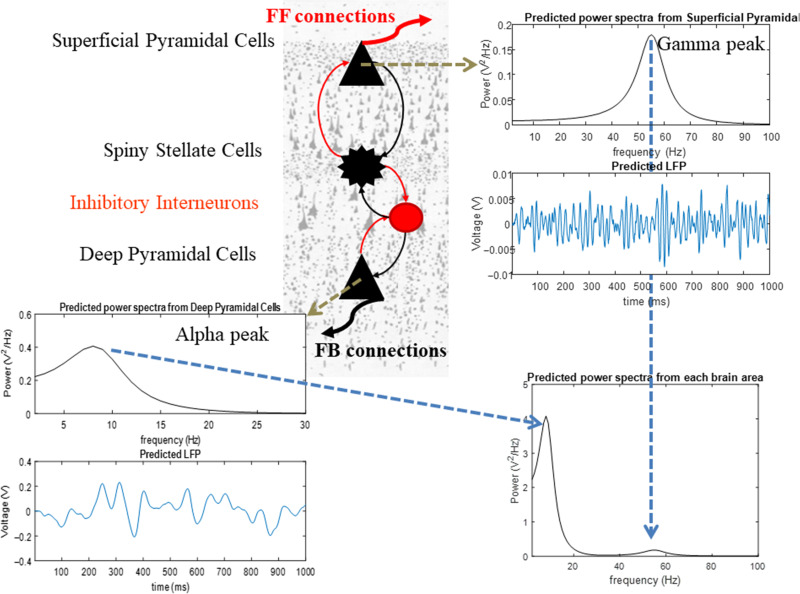Figure 2.
The canonical microcircuit model (CMC). The model suggests a canonical cortical architecture for the primate cortex. There are 4 populations of neurons (spiny stellate cells, superficial and deep pyramidal cells and inhibitory interneurons). These are connected together with excitatory (red) and inhibitory (black) intrinsic connections (thin lines). This set of populations and connections is motivated by anatomical and theoretical considerations supporting a canonical cortical microcircuitry (Douglas and Martin 2007; Bastos et al. 2012; Pinotsis et al. 2013). Power spectra and LFPs produced by these cells are shown in the top right and bottom left plots, respectively. Power spectra from each brain area are shown in the bottom right plot. Model parameters are chosen so that superficial and deep pyramidal cells oscillate at the gamma and alpha bands. These different laminar responses result from assuming different time constants (depending on GABAergic vs. glutamatergic neuromodulation) and intrinsic delay parameters for the different neuronal populations.

